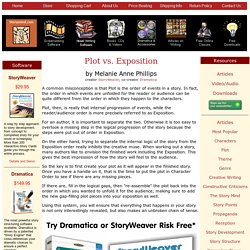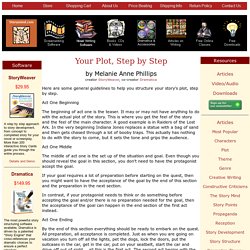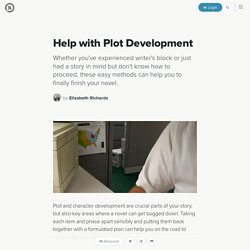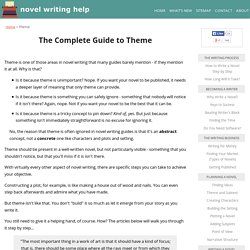

Elements of Suspense in Writing: 6 Secret to Creating and Sustaining Suspense. Thriller writing?

Mystery writing? Literary fiction? It’s all the same: Building apprehension in the minds of your readers is one of the most effective keys to engaging them early in your novel and keeping them flipping pages late into the night. Simply put, if you don’t hook your readers, they won’t get into the story. If you don’t drive the story forward by making readers worry about your main character, they won’t have a reason to keep reading. Think: Worry equals suspense. The best part is, the secrets for ratcheting up the suspense are easy to implement. 1.
Four factors are necessary for suspense—reader empathy, reader concern, impending danger and escalating tension. We create reader empathy by giving the character a desire, wound or internal struggle that readers can identify with. We want readers to worry about whether or not the character will get what he wants. Suspense builds as danger approaches. Then blow in more. And more. Until the reader can hardly stand it. 2. 3. 4. 5. 6. Confessions of an Opinionated Book Geek - Writing Tips #44: Five Tips for Writing Better... Confessions of an Opinionated Book Geek - Writing Tips #63: Six Directions for Visual... Confessions of an Opinionated Book Geek - Writing Tips #145:Story Beginnings - Part Two. Confessions of an Opinionated Book Geek - Writing Tips #144:Writing Tips - Story Beginnings,... Confessions of an Opinionated Book Geek - Writing Tips 143:Don’t Begin at the Beginning. Confessions of an Opinionated Book Geek - Writing Tips #136: Tweleve Things to Keep in Mind...
Confessions of an Opinionated Book Geek - Writing Tips #123: Narrative Elements... Confessions of an Opinionated Book Geek - Writing Tips #99:Foreshadowing. Confessions of an Opinionated Book Geek - Writing Tips #98: Foreshadowing and Suspense. Confessions of an Opinionated Book Geek - Writing Tips #97:The Art of Foreshadowing. Literary Elements: Plot and Conflict. Throughout the course of the school year, we will be studying various elements of literature in preparation for the PSSAs.

As we read short stories, poetry and drama, we will look at the appropriate literary elements in detail so we can better understand the literature. Plot vs. Exposition. Plot vs.

Exposition by Melanie Anne Phillipscreator StoryWeaver, co-creator Dramatica A common misconception is that Plot is the order of events in a story. In fact, the order in which events are unfolded for the reader or audience can be quite different from the order in which they happen to the characters. Plot, then, is really that internal progression of events, while the reader/audience order is more precisely referred to as Exposition.
For an author, it is important to separate the two. On the other hand, trying to separate the internal logic of the story from the Exposition order really inhibits the creative muse. So the key is to first create your plot as it will appear in the finished story. If there are, fill in the logical gaps, then "re-assemble" the plot back into the order in which you wanted to unfold it for the audience, making sure to add the new gap-filling plot pieces into your exposition as well. *Try either or both for 90 days. Your Plot, Step by Step. Your Plot, Step by Step by Melanie Anne Phillipscreator StoryWeaver, co-creator Dramatica Here are some general guidelines to help you structure your story's plot, step by step.

Writing Tension and Conflict. Which of the following sentences shows more tension to you?

"The bomb will go off in a month, we have plenty of time to disarm it. Developing Plot. It’s confirmed: I am not a character writer, able to start with a character and “see where the character takes me.”

Nope. I need to plot first. Now here’s the thing. I can tell you about 29 different plot paradigms. There’s the hero’s quest, especially as it plays out in Bridge to Terabithia. Help with Plot Development. Plot and character development are crucial parts of your story, but also key areas where a novel can get bogged down.

Taking each item and phase apart sensibly and putting them back together with a formulated plan can help you on the road to completing your story. Start by assigning one page for each character; it doesn't matter if you are writing with pen or in a computer, designate a system so that you can refer back to each individual page. Describe. How To Plot A Novel. Plotting a novel is no small task.

Not only do you have a lot of events to dream up, you also have to make the readers keep turning the pages. And that is what plot is all about at the end of the day - entertainment. Theme: The Complete Guide. Theme is one of those areas in novel writing that many guides barely mention - if they mention it at all.

Why is that? Is it because theme is unimportant? Nope. The Struggling Writer. If you are looking for writing advice, might I point you here?

I’m getting a ton of hits from tumblr on this post right now, so hey, how’s it going? I am about to do something that is probably very unprofessional, but I’m not getting paid for this so I will take my chances. Constructing Plot. The Elements of Plot Development If an author writes, "The king died and then the queen died," there is no plot for a story. But by writing, "The king died and then the queen died of grief," the writer has provided a plot line for a story.
A plot is a casual sequence of events, the "why" for the things that happen in the story. The plot draws the reader into the character's lives and helps the reader understand the choices that the characters make. A plot's structure is the way in which the story elements are arranged. Internal and External Conflict - Novel Writing Tips. Plotting Your Novel. By Lee Masterson "By failing to plan, you are planning to fail.
" A good story is made up of a logical beginning, a bumpy middle and a satisfying end. But a good plot is made up of more than just these three basics. Plotting an entire novel is a complex task, best summed up by saying it is the author's way of showing the reader the events as they are unfolding. A successful plot depends largely on how the author chooses to display those events as they unfold. The Inner Struggle: Guides for Using Inner Conflict That Make Sense. By Janice Hardy, @Janice_Hardy I sat in on an amazing workshop while I was at RWA that made something typically vague very clear and applicable. Michael Hague's Using Inner Conflict to Create Powerful Love Stories. It was one of those workshops that discussed what I already knew, but Hague presented it in such a way that I clearly saw a super easy way to apply inner journeys to my stories.
Forcing the Issue: Adding Conflict to Your Scenes. By Janice Hardy, @Janice_Hardy Sometimes I notice my protagonist is following along with the plot and doing what she needs to do, one step at a time, but even though things are problematic, there's no sense that there's really anything in the way trying to stop them. Sure, it's hard, but she just needs to fight through it to the next step. Stuff's in the way, but it's not opposing her. Where’s Your Conflict? You may have had the experience of picking up a book or an article and being bored silly without quite knowing why. The content is certainly interesting. You can see how it could be a fascinating story or subject.
But somehow, inexorably, you begin to yawn. What happened here? The book had potential! What is conflict. Fiction: Point of View. How many times have you heard this around the workshop table: “Why don’t you consider a new point of view?” (Actually, the term used more often is “POV” because it sounds a lot cooler, I suspect.) W R I T E W O R L D. W R I T E W O R L D. Incorporating Flashbacks. Story-Starters: Ten Ways to Jump-Start Your Plot. By Anne Marble Coming up with new story ideas is important to any fiction writer. Many writers no shortage of ideas for stories -- their problem is coping with having too many ideas. If you're like most writers, you probably have notebooks or computer files swarming with ideas.
Yet sometimes, you reach that point where none of the stories in those swarms are right for you. Here are ten steps to help you generate new story ideas. 1) Observe Everything Around You You can get ideas from everywhere. Try flipping through magazines and looking at pictures. 2) Subvert clichés You Don't Like Is there a romance novel cliché or plot twist you have gotten really sick of? For example, maybe you are tired of all those evil mother-in-law plots in romance novels. Here's another one. 3) Play Around with Careers Many romance plot conflicts stem from the careers of the hero and heroine. Think of possible careers for your characters -- and then think of plots that can stem from those careers. Mangle Anne M. Active Voice Versus Passive Voice. 10 of Literature’s Most Unreliable Narrators. “I tell the truth, even when I lie.”: A Discussion of Unreliable Narrators. What’s So Great About Unreliable Narrators?
Should Your Story Be Told by an Unreliable Narrator? The Unreliable Narrator & The Art of Misdirection. The Writing Café, I've researched unreliable narrator, but every... The Unreliable Narrator. How To Increase The Fun Factor of Your Fiction. How to Write a Prologue for Your Novel: 6 steps. My Imaginary Outline and Me.
How to Outline Your Novel. How to Format Dream Sequences in Books. Rookie Mistakes ~ Opening Scenes « NOVEL IDEAS. Definition of Third Person Omniscient. How to Use the Flashback Technique in a Short Story. First, Second, and Third Person. How I Plot A Novel in 5 Steps. How to Write a Memorable Beginning and Ending. 12Ways to Open Your Novel: The Story in Miniature. Writing Fiction: How to Structure a Killer Novel Ending. How to Craft a Happy Ending. Help with writing scene transitions. How to write an effective ‘flashback’ (and bring your reader with you!) Your Novel Blueprint.
To indicate a flashback or dream, append the scene header. A Simple Novel Outline – 9 questions for 25 chapters « H.E. Roulo. David Morrell On the Key to Settings. Chapter & Novel Lengths. Set up Your Story in the First Paragraphs. Historical Romance Author Robyn DeHart, Legend Hunters , Ladies Amateur Sleuth Society. Tips For Writing Reader Protagonist Stories. On Plot Structure & Plotting. Stuff You Should Cut From Your Story.
Writing Better Prompts, Starters, & Beginnings: A Few Pointers. Plot & Story Development Questions. On Showing vs. Telling.